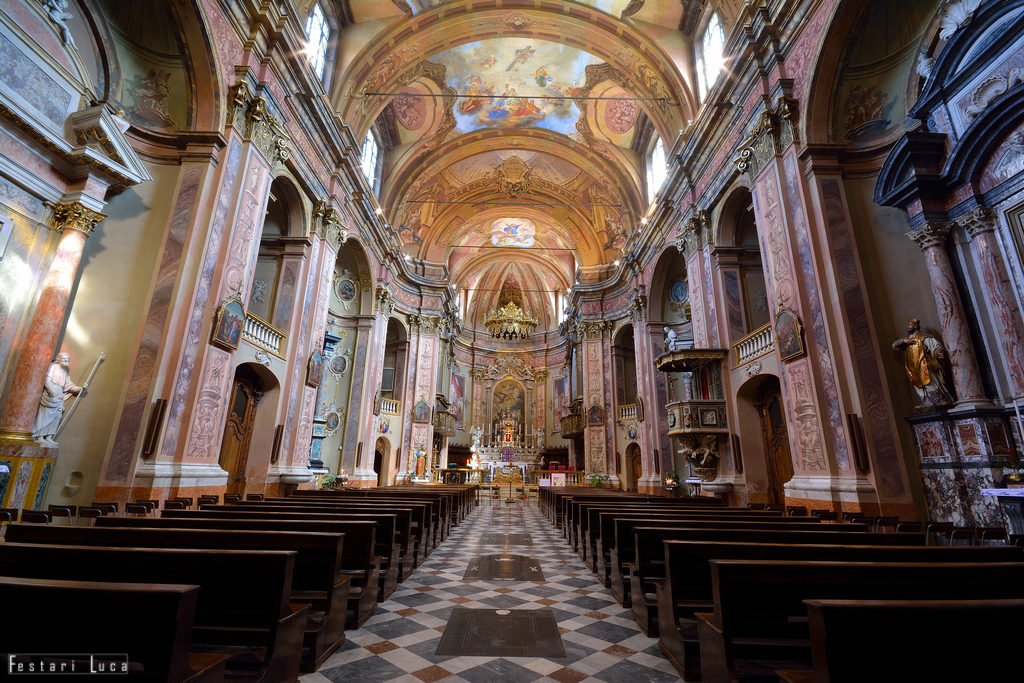
Walking towards the centre of the country on the right hand side, we see the parish home of the XV-XVIth century and, in front of it, there is a fountain with a mask and decorations sculptured in Ardesian marble.
A little further on, you can admire the grandeur of the Parish Church; the entrance to the churchyard is adorned with two polykyl shoulders which belonged to the primitive parish church from 1176. In fact, in 1455, the bishop Barozio preferred the construction of a new church which in the 1600’s was decorated with frescoes and stuccos. Its presbytery was used as a sacristy when in 1737, based on a design by Caniana, the present church was built with large vaults in “tuff” by Nasolino.
The interior has been heavily decorated in 1864 by the brothers Maironi and by the Garibaldian Paolo Mazzoleni. The splendid central altar as well as the monumental altars of the Rosary, the beautiful tabernacle and that of the Suffering were created by Fantoni. The most valuable painting is a canvas by Carlo Cresa from 1674, and depicts the Announciation and the Guardian Angel between Saint Laurence and Saint George. The large central altarpiece is signed by Saverio Dalla Rosa (1783) from Verona. The ovals on the presbytery are from Clusonese Querena (1837). The frescoes of the choir, that on the main door and the imaginative ones of the vault are also from the brothers Maironi (1864). From amongst the wooden sculptures, the lamentation of Christ and the pulpit, like the statue of St. Biagio, are famous and all of them are works by Fantoni of the 1700’s. The choir stalls belong to the artisanry from 1620. From the 1600’s there are even four angels in carved and gilded wood. The bell tower was erected in 1487 and was raised further in 1871.
In the churchyard, one deserves to note the Church of the Disciplines with a wooden altar inside and a little chapel of St. Rocco with fifteenth century frescoes.
